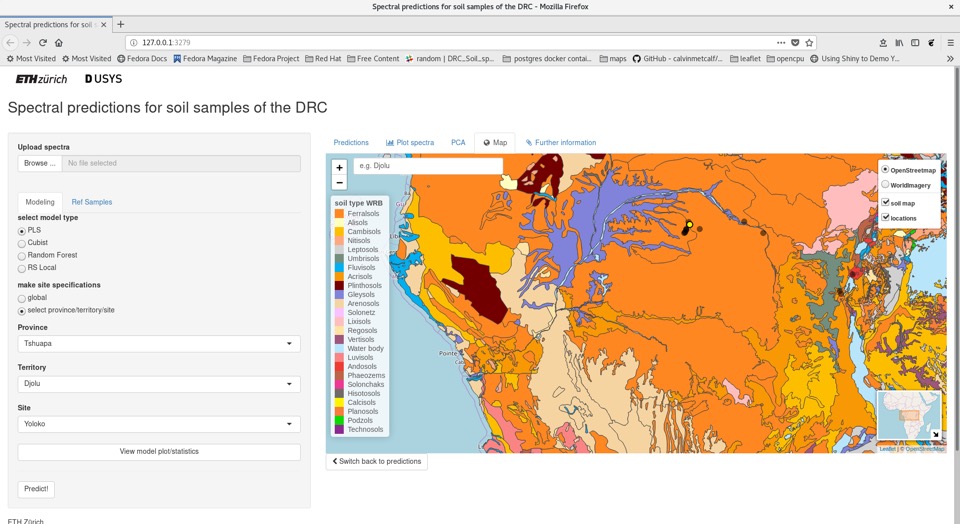DRC specific soil spectroscopic library
DRC specific soil spectroscopic library
Information about chemical and physical soil properties is not only crucial for an efficient and sustainable agricultural production, but also to understand nutrient cycles and fluxes. Compared to wet chemistry analyses of soil samples, infrared (IR) spectroscopy allows faster, less expensive, environmental-friendly, non-destructive, reproducible results which also cover spatial heterogeneity.
Triggered by the vibrations of groups of molecules within a specific wavelength range, a part of the IR radiation is absorbed, resulting in a characteristic absorbance spectrum. Based on these spectra calibrated to chemical reference values, concentrations of substances can be derived. For example, organic matter and the corresponding soil carbon and nitrogen turns out to be very accurately predicted by mid-infrared (MIR) spectroscopy, because the functional groups of organic matter have distinct absorbance peaks in the MIR range.
Especially in developing countries IR spectroscopy can serve as a promising tool for soil analysis, due to its low costs and simple handling that minimizes chemical consumables.
Congo Biogeochemistry Observatory
The DRC specific soil spectroscopic library is part of our work with the Congo Biogeochemistry Observatory (external pagewww.congo-biogeochem.comcall_made).

